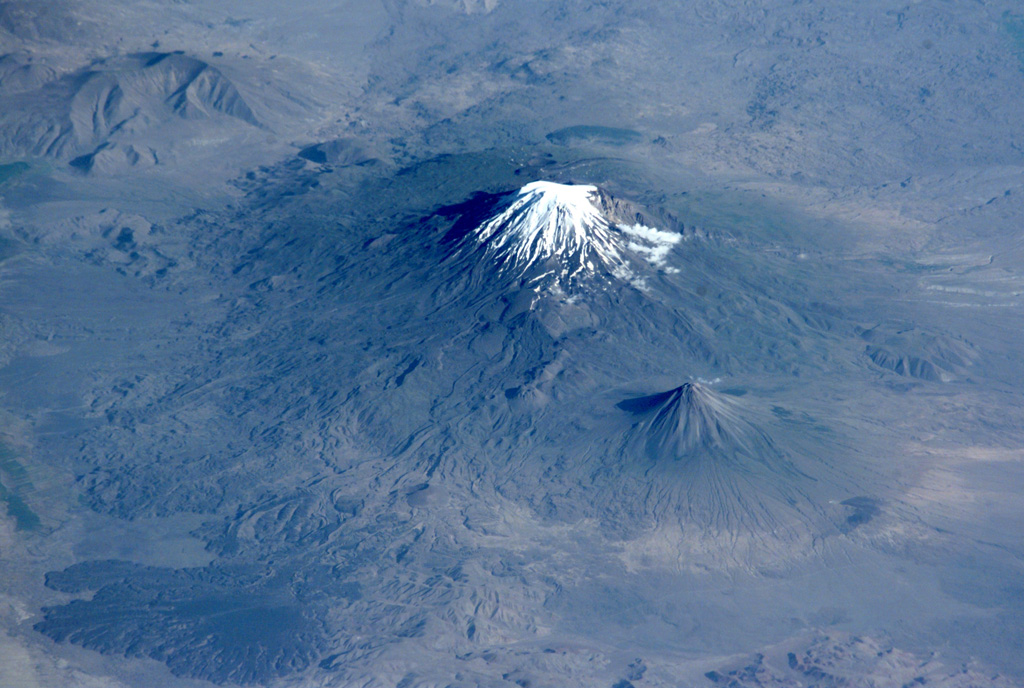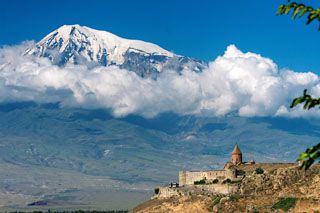Image GVP-11101

Glacier-clad Mount Ararat, seen in this NASA International Space Station image, is Turkey's highest, largest volume, and easternmost volcano. Kucuk Ararat (or Lesser Ararat) lies across a saddle to the SE (right-center). Prominent lava flows with flow levees were erupted from flank vents between Greater and Lesser Ararat; one of these terminates in a fan-shaped lobe at the lower left. Pyroclastic-flow deposits from Ararat overlie early Bronze Age artifacts.
NASA International Space Station image ISS002-E-10032, 2001 (http://eol.jsc.nasa.gov/).
![]() This image is made available as a Public Domain Work, but proper attribution is appreciated.
This image is made available as a Public Domain Work, but proper attribution is appreciated.
Keywords: stratovolcano | levee | lava lobe

Ararat
